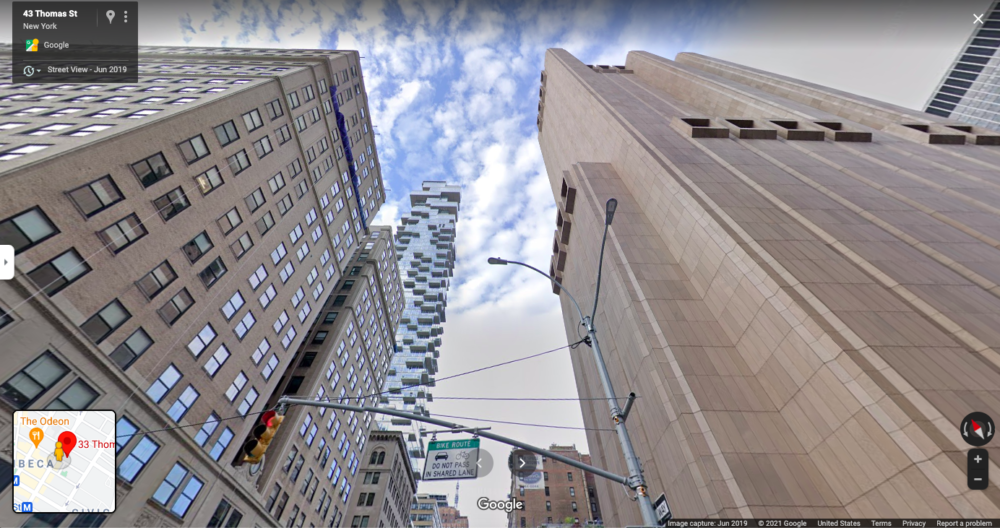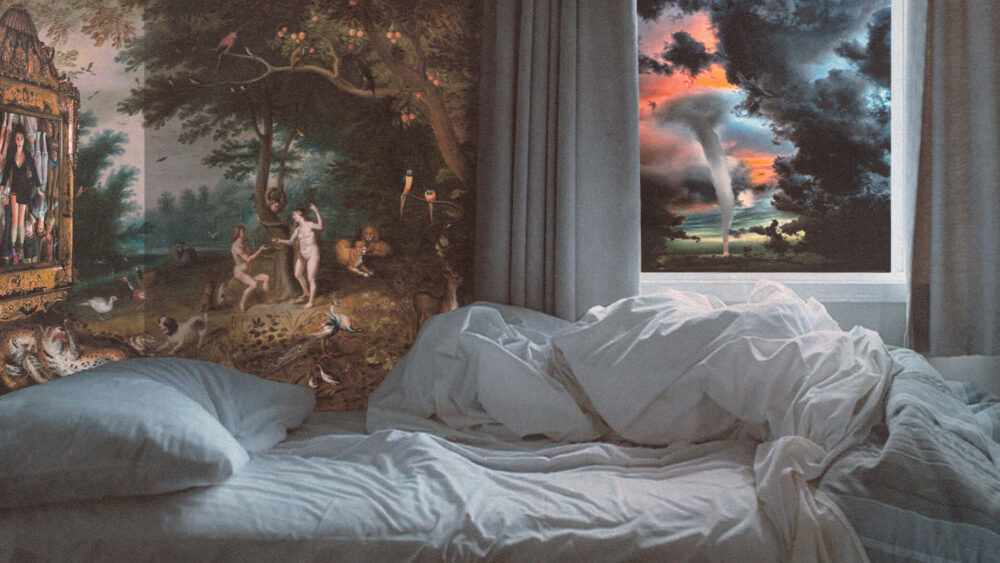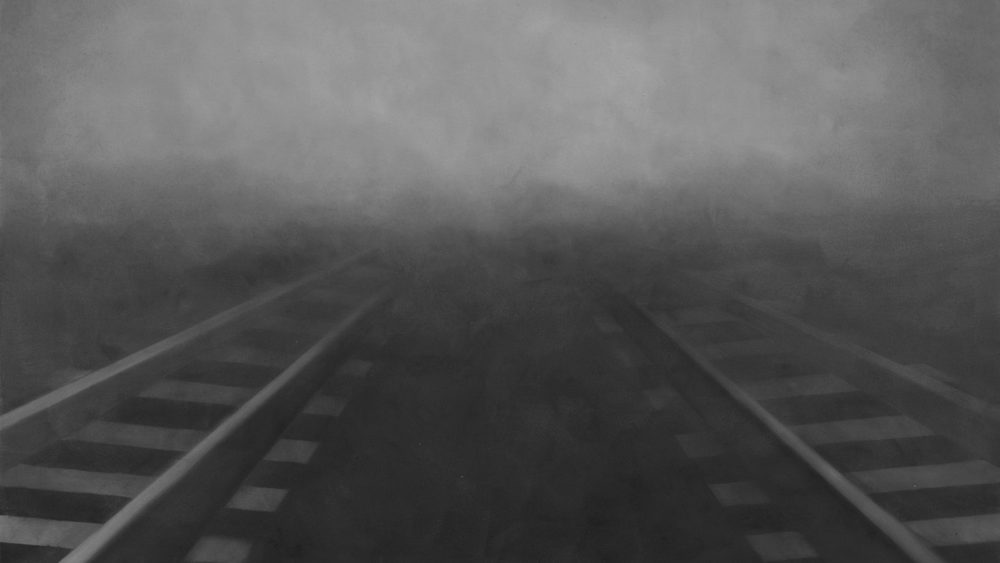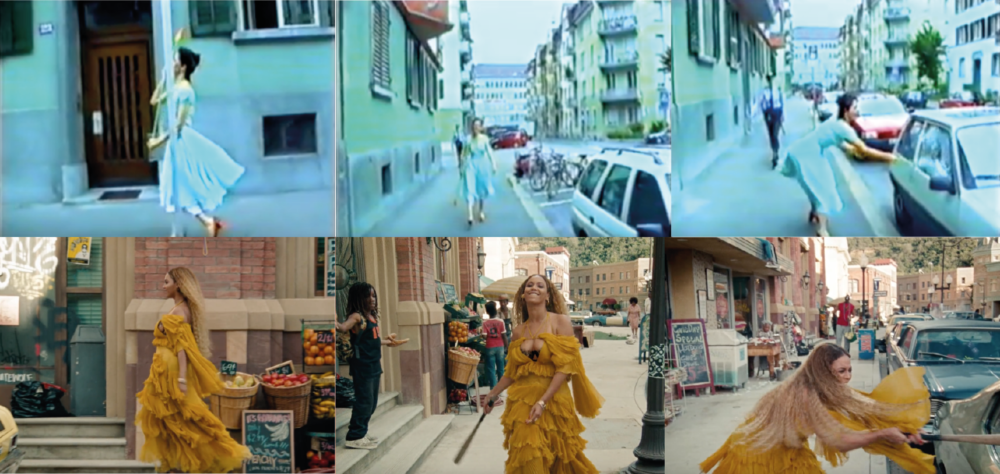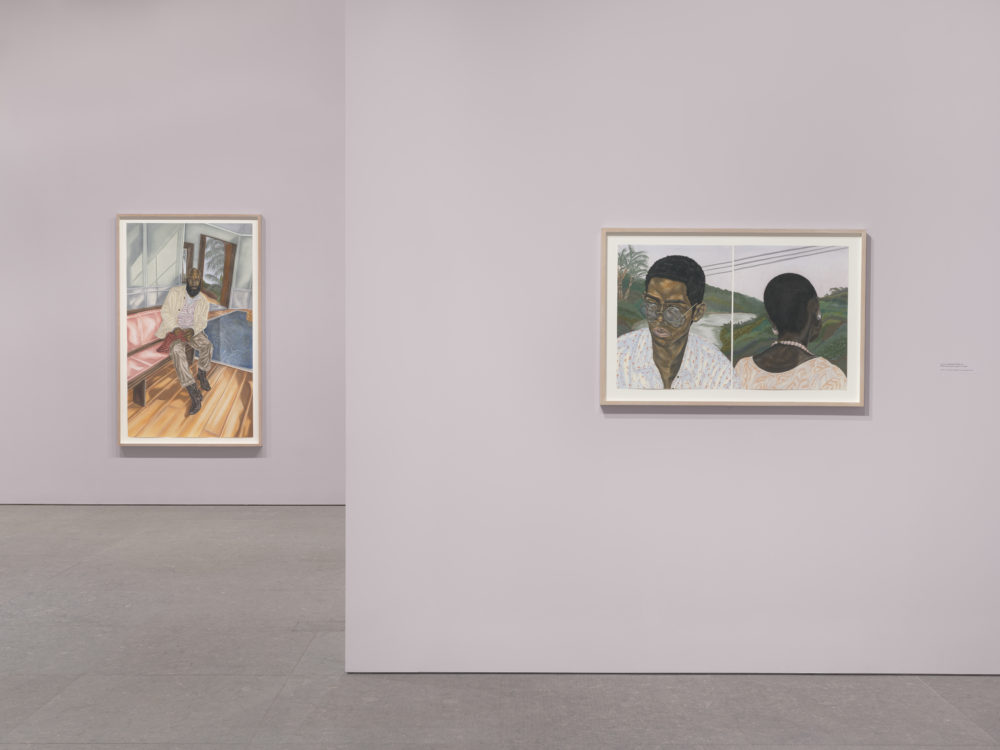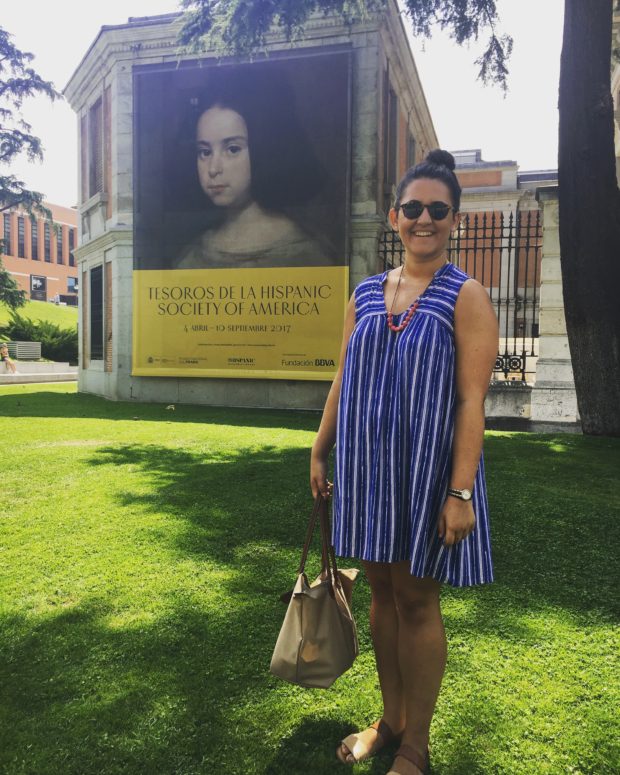This interview was conducted on December 9th, 2021 as part of New York University’s Curatorial Collaborative. This initiative matches BFA students from NYU Steinhardt with… Continue Reading “The Universal in the Personal:” A Conversation with David Ma and Caleb Williams
Posts tagged as “student posts”
Sailing high during Miami’s 2021 Art Week was Betye Saar’s 2019 Gliding into Midnight assemblage, making its home at the Institute of Contemporary Art. Positioned… Continue Reading Dead and Dying: Betye Saar’s and J. M. W. Turner’s Slave Ships
Cover image: 33 Thomas from the intersection of Church and Worth. Image courtesy of Google Maps. A few blocks south of Canal Street in Tribeca,… Continue Reading Art and Surveillance: Hiding in Plain Sight
With the changes brought on by the global pandemic, it is especially poignant to visit an exhibition celebrating the art of students and young graduates.… Continue Reading Reflections on “Yüzleşme, Confrontation:” Yeditepe University Faculty of Fine Arts Exhibition of Students and Graduates at Pera Museum in Istanbul
“The horror of looking is not necessarily in the image but in the story we provide to fill in what is left out of the image.” -Marianne Hirsch [1]
A recent survey conducted in February 2018 by the Conference on Jewish Material Claims Against Germany found that 49% of Millennials cannot name a single concentration camp or ghetto among the dozens that operated during the Holocaust.[2] Just one month after the survey’s results became public, an exhibition of California-based artist Natalie Arnoldi titled This Happened Here opened at Charlotte Jackson Fine Art. Five large-scale paintings by Arnoldi, which were not for sale, went on view from March 9th – 31st at the gallery in the trendy Railyard District of Santa Fe, New Mexico. These five paintings offer one avenue through which contemporary art can minimize the distance between a contemporary public and a historical event like the Holocaust.
An obscure, grainy oil painting of railroad tracks descending into the bleak distance rendered in greys, whites, and blacks titled Helix (2012) functioned as the meaningful starting point of the exhibition. A few years ago, a woman visited the studio of artist Charles Arnoldi, Arnoldi’s father, where one of his daughter’s train track paintings was hanging. Upon viewing Arnoldi’s painting, the woman burst into tears. She explained that her grandmother was a survivor of Auschwitz-Birkenau and that the work had reminded her of her grandmother’s arrival to the camp. Her reaction is a potent reminder that art does not exist in a vacuum. It is also a profoundly interesting example of the power of post-memory.
Never shy about her political stance, Beyonce openly endorsed candidate Hillary Clinton in the 2016 presidential election, making clear her belief that the future is female. Her album Lemonade, which Beyoncé produced the same year and complemented with powerful video content, illustrates her feminist stance through explicitly political, but also personal references.
One of the most memorable scenes from Lemonade is the second song Hold Up. Here, Beyoncé elegantly steps out of a neoclassical building followed by an overflowing mass of water. Then, she jubilantly leaps onto a street, where she takes a baseball bat away from a child and begins to smash the windows of the cars parked on the side of the street. This unexpected twist of tone departs from the innocent ecstasy evoked in the first scene reminds me of Pipilotti Rist’s 1997 video work Ever is Over All. Here, a woman in a blue dress gleefully walks down a street before, all of a sudden, starting to smash cars’ windows with a long flower stem.
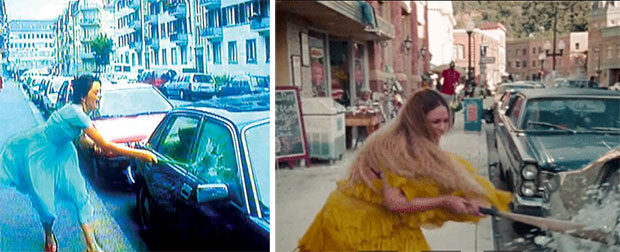
In early November, IFA MA student Cindy Qi interviewed Hu Xiangqian, whose work is currently exhibited at the Institute of Fine Arts, NYU as a part of the fall Duke House Exhibition chin(a)frica: an interface, on view through February 18, 2018. Hu Xiangqian (b. 1983) was born in Leizhou, Guangdong Province and graduated in 2007 from Guangzhou Academy of Fine Arts. He currently lives and works in New York City. Hu’s artistic practice is grounded in performance and video works featuring an intentional amateurishness and crudeness. Notable exhibitions include the Gwangju Biennial (2014) and the Shanghai Biennial (2016). A photographic still of his durational performance piece entitled The Sun (2008) hangs in the Institute’s Lecture Hall. The interview was conducted in mandarin Chinese and later translated to English by Cindy Qi.
CQ: Having been in New York for several months now, do you have any discoveries or inspirations you would like to share? Have you decided what kind of work to make during your time here?
来到纽约这几个月你有什么启发或者发现呢?现在有没有构想出想做的作品呢?
HXQ: Yes, I have been preparing to get started in my studio. I live in Brooklyn and in my opinion, it’s a very isolated area that has nothing to do with art, but I like that place. It allows me to distance myself from all that is happening in Manhattan while also having the opportunity to be close to all of it. I really like this feeling of being able to pull away and engage at the same time.
我在我的工作室里准备啊,我现在住的地方比较远,在布鲁克林。 那个地方算是很荒凉的,跟艺术没有什么关系。但是我喜欢那个地方,所以我会在那里做作品。我还挺喜欢这种跟曼哈顿若即若离的感觉。
When visitors step into the Whitney’s first-floor gallery, which currently houses Toyin Ojih Odutola: To Wander Determined, they risk forgetting that they are standing in a museum. There is a softness to the space that distances it from the rest of the building, its warm lighting and the pink color of the walls evoking a feeling of intimacy that is both inviting and disorienting. A proclamation near the entrance, signed by artist Toyin Ojih Odutola in her role as “Deputy Private Secretary,” alerts viewers that the sixteen arresting works spread throughout the gallery are from the private collections of two aristocratic Nigerian families, the UmuEze Amara and Obafemi, connected through the marriage of the Marquess of UmuEze Amara, TMH Jideofor Emeka, and his husband, Lord Temitope Omodele. With this information, the intimate atmosphere is given context: it feels as if visitors have been transported to a private, family portrait gallery.
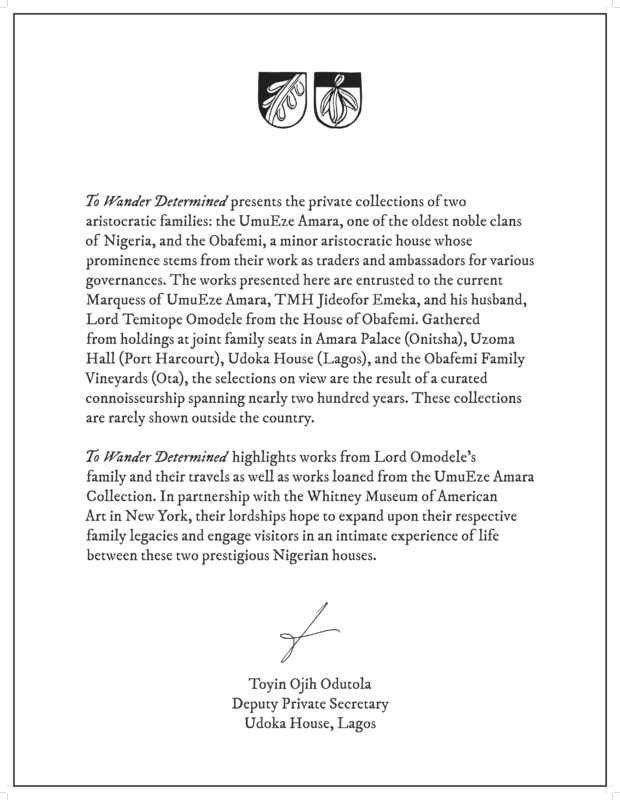
If not for the aforementioned, rather official wall text bearing the families’ crests, viewers would not know that Ojih Odutola’s subjects were of such prestigious social standing. Even armed with this knowledge, they are confronted with an incomplete narrative, left to question the identities of the elaborately fashioned figures in each portrait. No names are provided, nor are there any indications of the lineage from which each subject descends. What remains in their absence is a vague understanding that the subjects are related, as well as a desire to know how. Perhaps in other circumstances it would not occur to visitors to scrutinize the figures presented to them, but the context both provided and omitted by the artist’s proclamation incites a curiosity that may never fully be satisfied. This is the challenge that Ojih Odutola sets forth for her audience.
After drawing immense summer crowds, the most recent traveling exhibition at the Museo Nacional del Prado in Madrid, Tesoros from the Hispanic Society of America, Visions of the Hispanic World, closed its doors. The show truly was a museum within a museum – a mise en abîme of the New York City-based Hispanic Society of America within the galleries of the Spanish Royal Collection. The Hispanic Society normally finds its home on the Audubon Terrace at the northwest corner of 155th Street and Broadway, but after the museum closed in January to undergo significant renovations, its jewels were packed and shipped for the journey to Spain, and from there around the world. For some of these objects this was a return visit, a long-awaited homecoming after nearly a century of American residence. For many others, the Tesoros show constituted their maiden voyage to the Iberian Peninsula. During my visit in August, the vibrant and nuanced nature of this exhibition presented many topics worthy of reflection.
The Hispanic Society is the pipe dream of Archer Milton Huntington – a man who loved art, who adored museums, and whose heart, much like mine, rested somewhere between Spain and New York. Furthermore, it was crafted by Mr. Huntington: he did not merely open his wallet to finance the collection, he also played an active role in the construction of his museum and the selection of the art that would fill it. The evolution of his collection has been dependent on his legacy and the explicit wishes that he expressed through his interpersonal communication and diary entries during his lifetime.
Rather than treasuring only a few masterpieces, Huntington spent his fortune assembling a diverse variety of objects ranging across periods and media – paintings, sculptures, ceramics, glassware, prints, drawings, and more. His aims are best expressed by Mr. Huntington himself, in a claim made in his diaries that was rewritten on the wall of the third floor gallery of the Jeronimos building of the Prado show:
The museum… it must condense the soul of Spain into meanings, through works of the hand and spirit… I am collecting with a purpose and you know that purpose quite well… I wish to know Spain as Spain and so express her – in a museum. It is about all I can do. If I can make a poem of a museum it will be easy to read.
The exhibition at the Prado beautifully translates that very poem Mr. Huntington aspired to create. A walk through the galleries encourages visitors to see, to look, to wonder alongside Huntington.
Jennifer Rubell’s Housewife, an installation at the Sargent’s Daughters gallery on the Lower East Side, attempts a conceptual history of modern femininity. In the simplest terms, the show is a meditation on the seeming universality of white, middle-class femininity. However, to critique Rubell’s stark visual vocabulary in this way fails to acknowledge that her work nevertheless touches a certain comprehensive psychological experience, which is both explicit and all-inclusive. From the 1950s housewife to contemporary dating and the difficulties of being a modern woman in the workforce, Rubell’s four pieces – Pedestal, Vessel, Partition Paintings, and Threshold – visualize the precarious nature of a femininity defined and circumscribed by others.
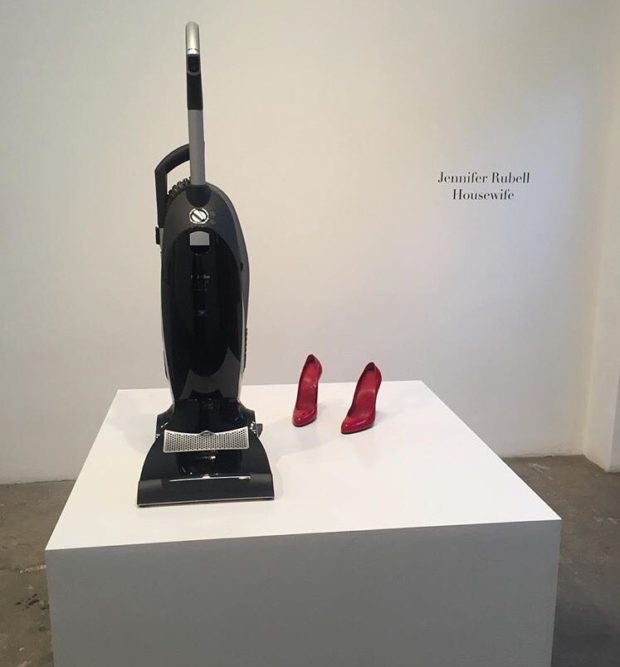
Three steps into the gallery space and the viewer is confronted by Pedestal, an industrial-quality vacuum cleaner placed next to a polished pair of red patent-leather heels fitted atop a heavy square platform. The glaring absence of the female form (the immediate assumption being that the empty space is, in fact, female), registers instantaneously. The effect is an invitation for the viewer to come closer, to slip on the heels, to grip the vacuum and fill that empty space. Although no apron or string of pearls is provided, the associations Rubell creates resonate with clarity. The piece references the commodified feminine ideal of the 1950s housewife who vacuums in her heels, has a hot meal on the table by six pm, and is ready for romance every night. However, because Rubell empties out that visual space, the viewer subconsciously fills it with her own form, which in return highlights the falsity and psychological dangers inherent in such mediating feminine perfection.



